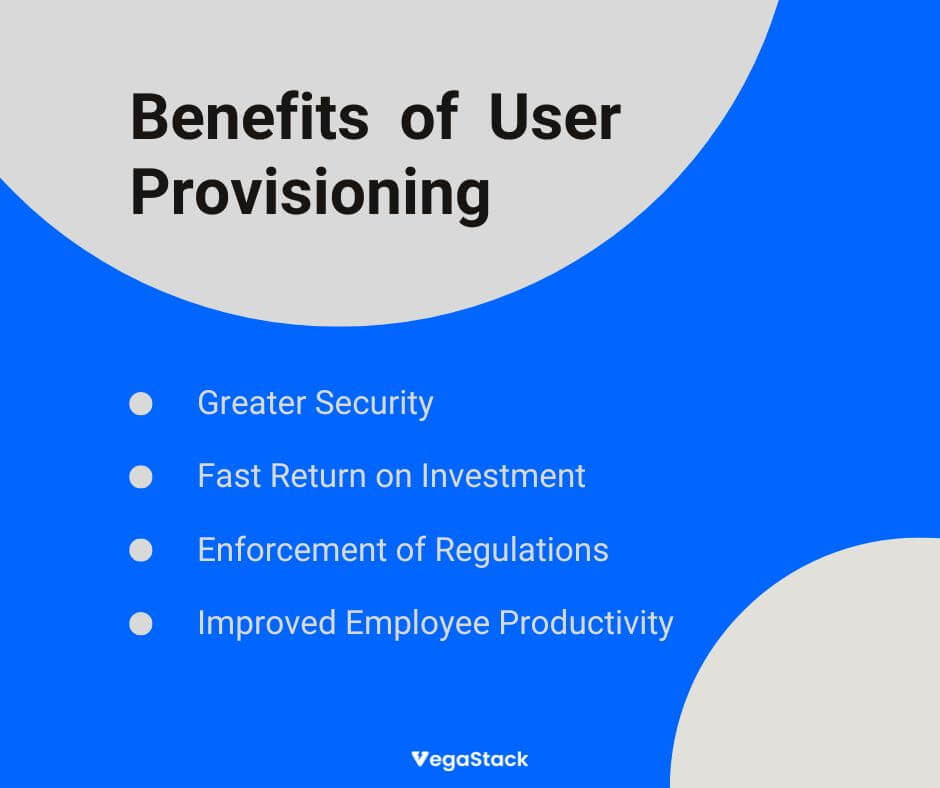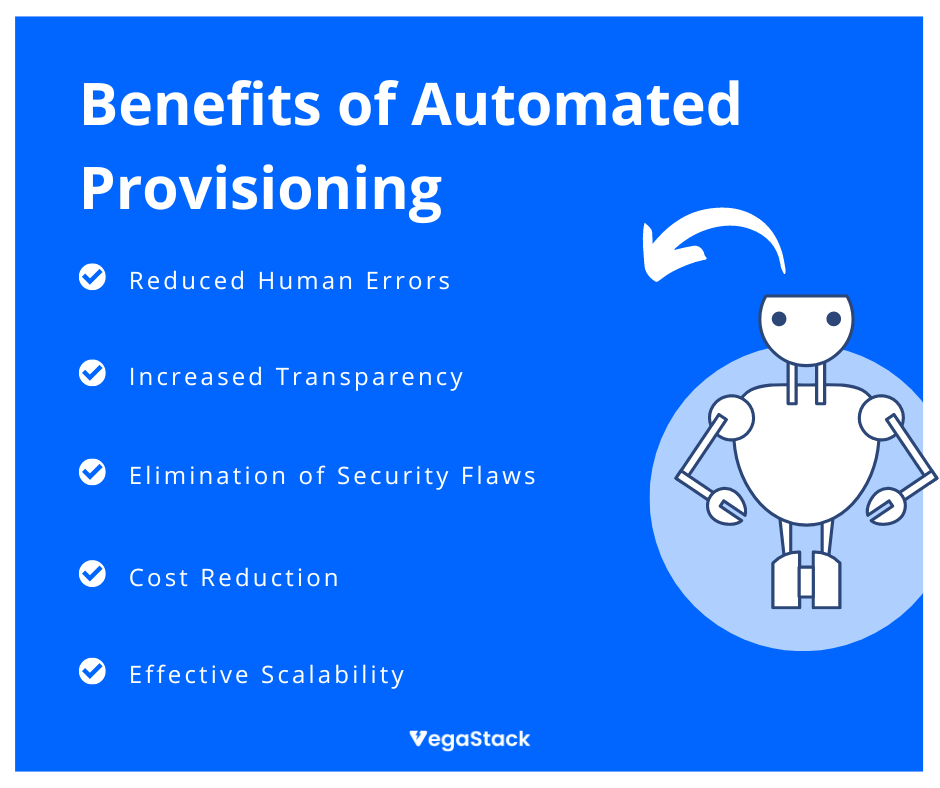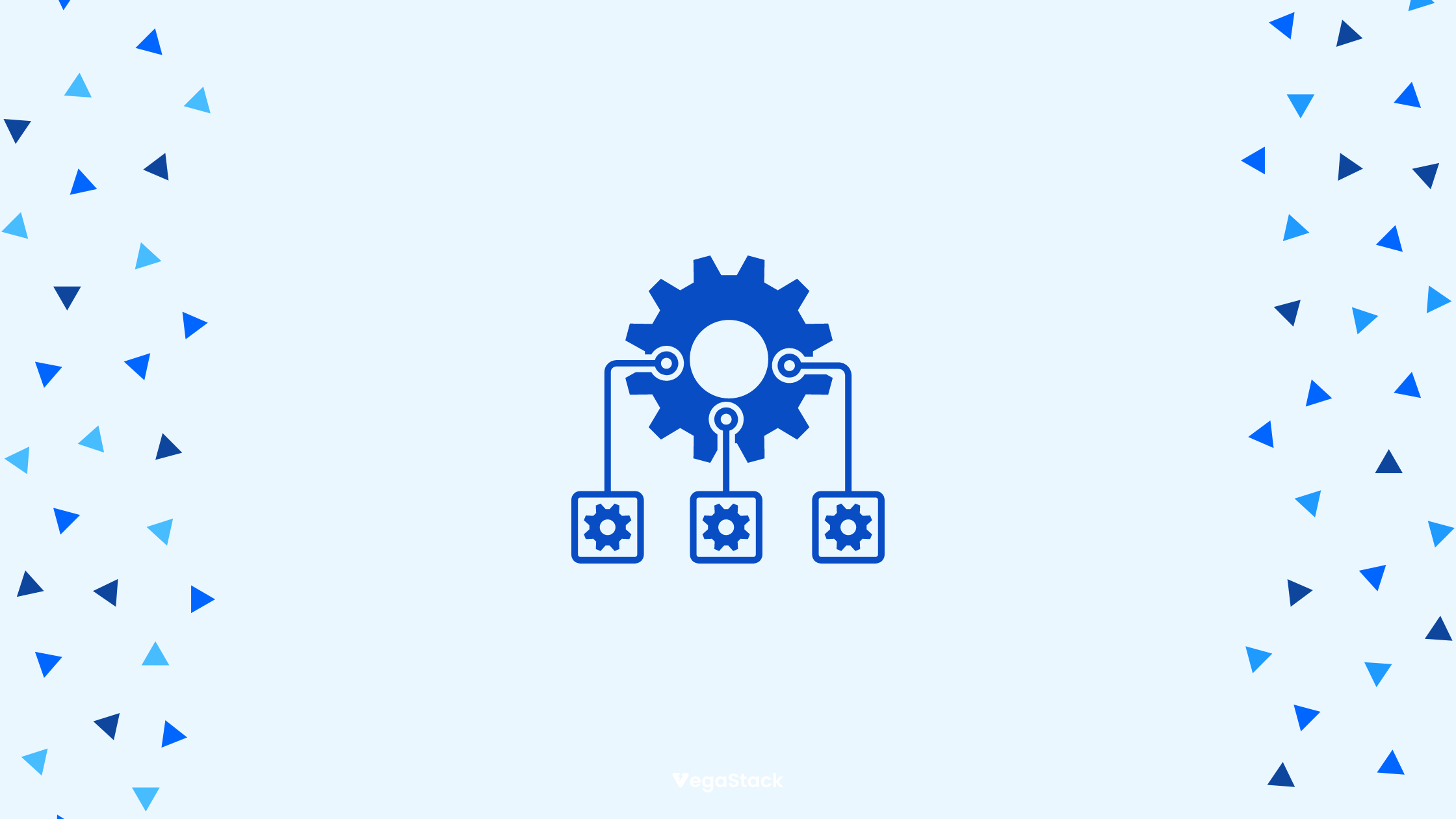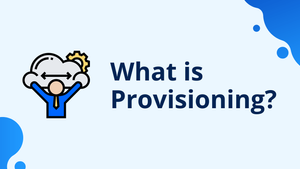Introduction
The process of putting up IT infrastructure is known as provisioning. It can also refer to the procedures for controlling and making data and resources available to users and systems.
Provisioning and configuration are not the same things, yet they are both steps in the deployment process. The next stage is configuration when something has been provisioned.
When the phrase "provisioning" is used, it can refer to a variety of processes, including server provisioning, network provisioning, user provisioning, service provisioning, and so on.
Simply said, provisioning is an approach to envisioning, implementing, and managing the whole spectrum of IT system resources that are used across an organization.
Levels of Provisioning
Server Provisioning
Server provisioning is the process of configuring a server for use in a network based on the resources that are required.
Provisioning can involve all of the processes required to construct a new machine and bring it up to speed, as well as define the system's desired state.
Setting up physical hardware in a data center, installing and configuring software, such as the operating system and applications, and connecting it to middleware, networks, and storage are all part of server provisioning.
Network Provisioning
Setting up a network for users, servers, containers, and IoT devices, among other things, is part of network provisioning. There are many different types of devices that are network consumers in today's connected society.
The telecommunications sector frequently uses the term "network provisioning" to refer to delivering a telecommunications service to a user, including the necessary equipment and wiring. It could also entail a user's wireless environment being activated as a service.
User Provisioning
User provisioning is a sort of identity management that keeps track of permissions and access rights. User attributes and user objects, such as employees, vendors, contractors, and others, are used to describe provisioning. Email, database access, and network access are examples of services supplied.
User provisioning includes things like setting up role-based access control (RBAC). Permissions, roles, groups, and users are all part of RBAC.
A user is assigned to a group or groups, and a group is assigned to roles (for example, read-only, editor, or administrator), and a role is made up of permissions.
The management of user provisioning is frequently split between IT and human resources.
Service Provisioning
Setting up service and managing the data associated with it is both parts of service provisioning. In the telecommunications business, service provisioning is used to set up a service for a customer, as well as in cloud architecture.
Cloud service provisioning, for example, is the self-service aspect of cloud computing. Users can access cloud services using a self-service portal without the need for IT assistance.
Benefits of User Provisioning
Having the correct people with the right permissions to access the relevant applications and infrastructure has several important business benefits. The following are some of the advantages:
Enhanced Safety
User provisioning is used to manage user access privileges and guarantee that stated security standards are followed. Administrators create user rights without having direct access to user passwords or other critical data, improving the security posture of the company. Furthermore, if a user needs a password change or other assistance, proper provisioning makes these procedures simple and quick.
Regulations Enforcement
The correct IT provisioning solutions may assist enforce regulatory compliance throughout a business, which goes hand in hand with increased security. Provisioning is an excellent way for ensuring that critical standards are understood and met by creating audit logs, enhancing user information access, and enforcing control over sensitive data.
Improved Employee Productivity
The primary functions of effective IT user provisioning are managing credentials and confirming user identities. This could boost staff productivity by removing many of the inefficient, time-consuming tasks involved with handling individual application passwords and other provisioning-related difficulties.
Efficient User-Centric Administration
Administrators can manage user and application accounts from a single, centralized system using provisioning. Administrators can provide a variety of application accounts across the organization's IT infrastructure, and application credential changes can be updated automatically.
Quick Return on Investment
Traditional user account management necessitates a major time and financial investment. Effective provisioning lowers those expenses significantly, allowing organizations to recoup their investment more rapidly and turn account management into a valued company resource.

What is Automated Provisioning?
In most businesses, ensuring proper user onboarding, offboarding, and updating requires numerous critical, but potentially time-consuming activities. Manually addressing these processes one at a time can quickly suck up administrators' time, limiting their ability to handle other critical responsibilities.
Without the requirement for manual action on the part of the administrator, automated user provisioning automatically adjusts user access rights. Automatic provisioning refreshes users' IT-resource access when new users join a company, existing users change roles or responsibilities, or users depart an organization. This relieves the administrators of much of the burden of managing user permissions.
Benefits of Automated Provisioning
IT and HR departments may benefit from automated provisioning for a variety of reasons. The following are some of the key benefits of automatic provisioning:
Reduced Human Errors
Manual provisioning is never fully safe, especially when it comes to password creation. Passwords and other log-in information are virtually always shared with an employee in traditional techniques for generating user accounts. This not only makes the password accessible to at least one person other than the intended recipient, but it also exposes the password to human mistakes as it is communicated by email, corporate communication tools, or even handwritten paper notes.
Assigning the wrong privileges to the wrong users is also becoming increasingly widespread. Automated provisioning eliminates these risks by accurately and safely granting permissions to the appropriate individuals.
Increased Transparency
Businesses must guarantee that the proper individuals have clear access to the correct resources in order to achieve optimal organizational efficiency. Unfortunately, without an up-to-date record of rights and system privileges, keeping track of who has the authorization to access what and for how long can be difficult.
Automated provisioning maintains a complete record of each employee's authorization levels and how they are used. Administrators benefit from complete transparency thanks to a centralized, integrated view of user identities and access.
Elimination of Security Flaws
Threat actors frequently take advantage of security flaws to acquire control of current system rights or generate new ones for themselves. This risk is considerably reduced by automated provisioning. Automated provisioning systems not only eliminate human error from the security equation but also offer a single, approved channel for creating and maintaining access privileges. Administrators also have complete visibility into who has access. Threat actors rely on security gaps, and this effectively closes them.
Cost Reduction
Automatic provisioning systems are a long-term investment that saves businesses more money than they cost. This is because, while provisioning solutions aren't cheap, they have the ability to reduce expenses associated with onboarding and operations dramatically. As previously said, provisioning aids in the streamlining of IT and HR processes, resulting in higher productivity and, as a result, increased revenue from other initiatives.
Effective Scalability
The business expansion would often be accompanied by bottlenecks caused by manually assigning, deleting, and updating system privileges in traditional provisioning. Automated provisioning enables businesses to scale at their own speed, automatically granting and revoking system and tool access when employees take on new responsibilities and new hiring. Companies can optimize their lifecycle management and identity management operations with effective provision automation, allowing unlimited scalability.

Best Practices for Provisioning
Automated user provisioning can be a good way to manage employee lifecycles and identities, but it isn't a panacea. Consider the following best practices to get the most out of a provisioning solution:
Introduce Automation Wherever Possible
The smaller the chance of mistakes and security issues, the more automation the provisioning solution provides. This is especially true when it comes to onboarding and offboarding procedures. When an employee is hired, promoted, reassigned, given new tools or resources, or quits a firm, automated provisioning and de-provisioning help ensure a smooth and secure transition.
Simultaneously, automated provisioning ensures that third-party contractors and partners have easy access to the system resources they require while protecting sensitive data.
Deprovision Users Immediately as they Exit
When an employee leaves, the administrator should deactivate all permissions related to that employee and erase them from the directory as soon as possible. This will prevent unauthorized access, thus enhancing the security of the firm.
Increase Number of security Levels
Provisioning software is ideal for giving IT and HR administrators control over roles, access, and security policies across departments. These administrators can further secure apps and rights by enacting new policies, ensuring that crucial system access is protected.
Constant Monitoring
Users who have access to systems are only as secure as the systems themselves. Provisioning allows system administrators complete visibility into each employee's status and the resources they have access to regular monitoring will guarantee that no user has more access permissions than they require and that no accounts for deactivated users exist.
How to Automate Provisioning?
IT infrastructure provisioning used to be done manually, which involved putting up physical servers and configuring hardware to the necessary settings. You'd have to order extra hardware, wait for it to arrive, then set it up and provide it if you require more capacity.
Introducing virtualization and containers have sped up the provisioning process while removing the need for frequent hardware provisioning and management. Automation can also be used to handle provisioning.
Many enterprise environments have grown in scale and capacity as a result of virtual infrastructure, which has its own set of issues. Developers still have to manually provision virtual infrastructure for each new deployment, which takes time and is prone to human error.
When provisioning is managed manually by developers for each deployment, it's tough to keep track of changes, regulate versions, and avoid errors and inconsistencies.
Infrastructure as code (IaC) provides a solution, allowing you to automate your infrastructure.

IaC refers to the management and provisioning of infrastructure using code rather than human methods.
Developers don't have to manually supply and manage servers, operating systems, storage, and other infrastructure components each time they create or deploy an application because infrastructure provisioning is automated using IaC.
Configuration files containing your infrastructure specs are prepared with IaC. Developers no longer have to worry about provisioning because they can just run a script to get their infrastructure up and running.
IaC ensures that you always have the same environment.
Deploying your infrastructure as code also allows you to break it down into modular components that can be combined in a variety of ways using automation.
Codifying your infrastructure creates a template for provisioning, and while this may still be done manually, an automation tool like Red Hat, Ansible Automation Platform can take care of it for you.
A playbook is used with the Ansible Automation Platform to define the intended state of your infrastructure, which the tool may subsequently provision. Ansible Automation Platform can also be used for configuration management to keep your systems in the appropriate state.
Automating the provisioning of any infrastructure is the first step in automating your application's operational life cycle.
Conclusion
To collect data, facilitate communication and collaboration, interact with customers, and more, modern organizations heavily rely on information technology. In fact, technology is integral to virtually every aspect of business, from the services provided to how employees do their work.
When deployed correctly, a company's IT infrastructure helps optimize and support essential processes. However, infrastructure doesn't develop naturally; it needs to be properly provisioned.


